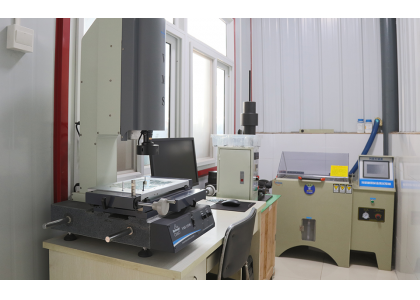
Salt spray test and practical connection:
The salt spray test after electroplating of screws is a kind of environmental test which mainly uses the artificial simulated salt spray environmental conditions created by the salt spray test equipment to evaluate the corrosion resistance of products or metal materials. It is divided into two categories, one is the natural environmental exposure test, the other is the artificial accelerated simulated salt spray environmental test. Artificial simulated salt spray environmental test is to use a test equipment with a certain volume space - salt spray test chamber, in its volume space with artificial methods to create a salt spray environment to assess the quality of the product's salt spray corrosion resistance. Compared with the natural environment, the salt concentration of chloride in the salt spray environment can be several times or dozens of times the salt spray content in the general natural environment, which greatly improves the corrosion rate, conducts salt spray test on the product, and greatly shortens the time to obtain the results. For example, if a product sample is tested in a natural exposure environment, it may take 1 year to corrod, and if it is tested under artificial simulated salt spray environmental conditions, similar results can be obtained in as long as 24 hours.
Artificial simulated salt spray test classification
Artificial simulated salt spray test includes neutral salt spray test, acetate spray test, copper salt accelerated acetate spray test, alternating salt spray test.
(1) Neutral salt spray test (NSS test)
It is the earliest and most widely used accelerated corrosion test method. It uses 5% sodium chloride brine solution, the PH value of the solution is adjusted in the neutral range (6 ~ 7) as the spray solution. The test temperature was set at 35℃, and the sedimentation rate of salt spray was required to be between 1 ~ 2ml/80cm2.h.
(2) Acetate spray test (ASS test)
It was developed on the basis of the neutral salt spray test. It is to add some glacial acetic acid to 5% sodium chloride solution, so that the PH value of the solution is reduced to about 3, the solution becomes acidic, and the salt spray finally formed is also changed from neutral salt spray to acidic. Its corrosion rate is about 3 times faster than the NSS test.
(3) Copper accelerated acetate spray test (CASS test)
It is a rapid salt spray corrosion test recently developed abroad, the test temperature is 50℃, and a small amount of copper salt - copper chloride is added to the salt solution to strongly induce corrosion. Its corrosion rate is about 8 times that of the NSS test.
(4) Alternating salt spray test
It is a comprehensive salt spray test, which is actually a neutral salt spray test plus a constant wet heat test. It is mainly used for cavity type machine products, through the penetration of tidal environment, so that salt spray corrosion is not only produced on the surface of the product, but also in the product. It is to convert the product alternately under the two environmental conditions of salt spray and wet heat, and finally check whether the electrical and mechanical properties of the whole product have changed.
Purpose of salt spray test:
The purpose of salt spray test is to assess the salt spray corrosion resistance of products or metal materials, and the salt spray test result is the judgment of product quality, its judgment result is correct and reasonable, is the key to correctly measure the salt spray corrosion resistance of products or metal. The evaluation methods of salt spray test results include: rating evaluation method, weighing evaluation method, corrosion occurrence evaluation method, corrosion data statistical analysis method. The rating method is to divide the percentage of the corrosion area to the total area into several levels according to a certain method, and take a certain level as the basis for qualified judgment, which is suitable for plate sample evaluation; Weighing method is a method to weigh the weight of the sample before and after the corrosion test, calculate the weight of the corrosion loss to evaluate the corrosion resistance of the sample, which is especially suitable for the corrosion resistance of a certain metal. Corrosion presence determination method is a qualitative determination method, it is based on the salt spray corrosion test, whether the product corrosion phenomenon to determine the sample, most of the general product standards adopt this method; The statistical analysis method of corrosion data provides a method for designing corrosion test, analyzing corrosion data, and determining the confidence of corrosion data. It is mainly used for analyzing and analyzing corrosion conditions, rather than for determining the quality of a specific product.
Therefore, according to the above, to test the corrosion resistance of screws, in general, the test means is to do salt spray test.